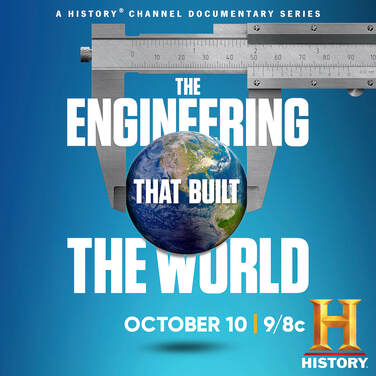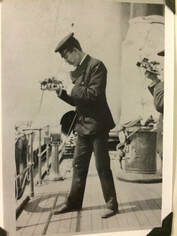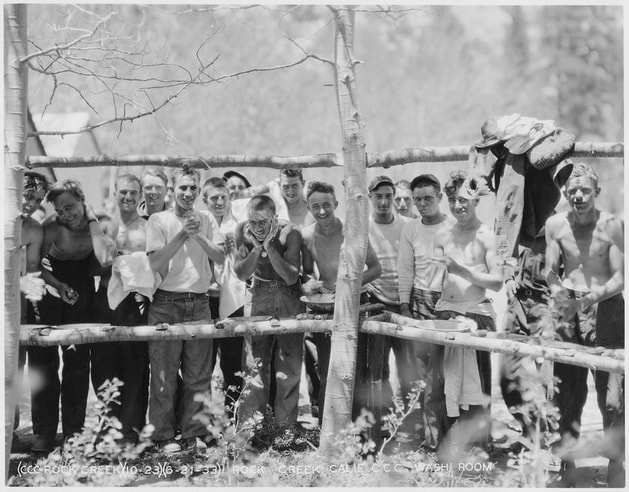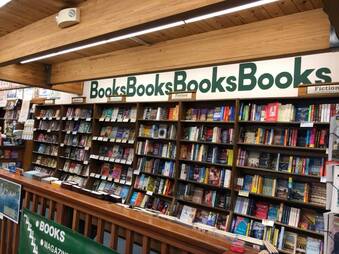|
3/23/2022 0 Comments The Tree Army VideoI put this video together a few years ago to highlight the work of the US Civilian Conservation Corps. During the Great Depression they planted over three billion trees in our state and national forests. As it is approaching Arbor Day and the book launch date of my novel The Truth of Who You Are set during this time and about these men (April 28, 2022) I am sharing this video. Click Below and Enjoy!
0 Comments
1/25/2022 1 Comment The Book That Won't Quit Photo by Thought Catalog on Unsplash Photo by Thought Catalog on Unsplash About five years ago I was on a trip in the Orcas Islands when I learned about the men in the Civilian Conservation Corps who worked for a measly $5.00/week during the Great Depression, building infrastructure and planting over 1 billion trees in our nation's parks. Of course I'd heard of these men but never knew much about their work or their history. But after reading about the Corps, the multitude of men who hearkened from diverse geographic backgrounds, many of them first and second generation immigrants, I felt compelled to tell their story. I hadn't realized it at the time, but this book project titled The Truth of Who You Are, would become an emotional journey for me that had me doubting myself time and time again. Was it worth it? I kept asking. Let me list the tribulations to see this novel through to a publishing deal. 1) Research - since the novel is historical, I had to do research, which meant traveling to some of the sites where these men worked. Being self-funded, I launched an online crowdfunding campaign. I made a video, which took hours, and I almost made my goals. But the campaign failed and I wrote about it here. So I scaled back my travel plans to something doable - research in the Smoky Mountains, near where my parents lived in South Carolina. There was a lot of history to work with and hey, it's a tax write off, right? 2) Contests - I am a sucker for them. After winning one literary contest in 2017 for my novel The Night is Done, I figured I might be in a roll, so why not enter my work in progress to some contests , see how it goes? I entered The Truth of Who You Are in five writing contests. It gained semi-finalist status in one, and lost in two others. One is still pending. But the most heartbreaking loss was a national, prestigious contest that required I not pitch the book to anyone, no agents or publishers, until they told me it was out of the running. Five months later and two weeks before they were going to announce the winner, I still hadn't heard anything. My novel was still in the running. I couldn't believe it. The prize was $25,000 and a publishing contract. Could it be that The Truth of Who You Are had won? Everyday that I opened my email and there was no rejection I got my hopes up. My anxiety level was through the roof. I told only a few select friends and family about my anticipation. And then....rejection. 3) Publishers and Agents- I've attended numerous conferences over the past few years, pitching this novel to agents and editors at publishing houses. One editor wrote back to me with constructive feedback as well as encouraging words. "The Conservation Corps sections are terrific, I think. They really conjure time and place and show the impact of the programs on the people who participated in them and on the communities they served. And the burgeoning romance is nicely done as well." Yay! I revised and resubmitted. It was rejected. That was one of many to come from other agents and publishers, after they requested to read the whole manuscript. 4) Revise, revise, revise - the next step in the process is always to self-reflect, reexamine the manuscript and revise. At some point though one has to decide. What is the issue here? Is this novel not marketable? What do people want? Many revisions later, I adjusted the concept, and started all over again with the pitching. 5) Publishing Contract - I sent the novel to a small publisher who offed me a contract. Yay! Then I read the contract. That and a few other things led me to believe I'd be no better off than if I published it myself, so I declined. I can't even begin to tell you what a gut wrenching decision that was. 6) Giving up - I firmly believe in this novel. I know what it feels like to not believe something is worth pursuing. I have a novel I wrote about smuggling along the US/Canadian border sitting on my laptop which will never see print. But this novel, The Truth of Who You Are, is different. I've had positive feedback from several readers, people who I've only met in online writing circles. And my critique partner, who is brutally honest, told me it is my best writing so far. Recently a publisher asked me for the full manuscript and I’m waiting for their response. Their contract is posted on their website and seems more favorable. So we'll see. Like I said, this book won't quit. But I imagine, neither did these guys from the Conservation Corps. Post script: I wrote this blog in November 2019 and have since signed a contract with Black Rose Writing to publish. The novel launches April 28, 2022. You can pre-order (discounted) ebooks at the following links. 11/23/2021 0 Comments Featured Guest on History Channel When I got the call to appear as a featured guest on the History Channel's Engineering That Built the World tv series my response was: "Me? You Sure? How did you hear about me?" I was told that the head of the history Channel recommended me. Really. Not sure if I can verify that but I will say that if it hadn't been for my blog on the Durant Family Saga probably no one would have heard of my fictional account of the family of Thomas Durant. My name is associated with this infamous family because of my relentless pursuit of information about them and blogging about the research journey. I went to the New York City A&E studios in August 2021 and spent about two hours interviewing with Karl Hollandt and his crew from Six West Media. And while they only used about three minutes of the total interview, I was thrilled to be a part of the episode about the building of the Transcontinental Railroad titled Race for the Railroad. I'm not an expert on the Transcontinental Railroad but I am well versed in the motivations behind why Thomas Durant conspired to take over the Union Pacific Railroad and control the contracts - so he could bilk the U.S. government out of millions by over charging for construction. It was the money he made during this time period (1864-69) that allowed him to acquire the half million acres in the Adirondacks which he planned to exploit as a playground for the rich during the Gilded Age. His son William was supposed to spearhead this venture and if you read my novels you will learned more about what happened to Thomas Durant's legacy. If you missed the first episode you can stream it online here. 10/10/2021 1 Comment From Novel to Screenplay I had this idea that my Durant Family Saga trilogy would get optioned one day as a spin-off of the popular streaming series Hell on Wheels, and I’d make a million dollars. That hasn’t happened. Actually, I didn’t set out writing the Durant Family Saga with the idea it would be adapted to a screenplay. That idea came later while working on my second novel in the trilogy and a fan pointed out that the family patriarch, Doc Durant, was also the main character on the tv series Hell on Wheels. Was it possible? Serendipity provided me the opportunity to connect with an entertainment executive via a zoom chat who suggested a realistic scenario. “You’re not a best-selling author, and no one is going to come knocking, nor will they pay a screenwriter 25k to write the pilot episode of a series.” So, he said, “Write it yourself.” I told him I’d give it a try and that my philosophy on writing has always been that if it ever feels like it’s a hardship, or I start to hate the process, I’d quit. He requested I develop a pilot episode and what the industry terms a ‘bible’ for the series. A bible, in a novelist’s world, would be a multiple-page synopsis, laying out each season of the series, the major plot points, and the trajectory of the story. My task was to condense nine hundred pages of my novels to fourteen pages (covering four seasons). We left it that I would send him my script when I was ready. I took an online class on scriptwriting that I could do at my own pace. I listened to webinars on the craft of writing scripts and bibles. I read everything I could. And I hired a script editor that I found thanks to Lucy V. Hays and her Bang2Write website. It took months but I finally felt confident in sending the draft of my pilot episode (about 45 pages) and the bible for the series. This is what I learned along the way. I hope it helps you if you are thinking of doing this yourself. 1. Purchase software for scriptwriting. I bought Final Draft. It formats everything for you so you don’t have to worry about margins and headers. You will need software made for scriptwriting so you don’t lose your mind over this detail; learning how to write a script is challenging enough. 2. Script readers crave white space. A script consists of Scene Heading (Int. Cabin, Day) Action, and Dialogue. Out the window went all of my pretty descriptions of place which I’m known for in my novels. I read recently in a Twitter thread by a script reader, don’t describe the sunset, we all know what one looks like. That was hard for me. Out of nine hundred pages of my trilogy, I’d guess 1/3 third is descriptive of the Adirondack mountains. Indeed, I’m writing another script based on a short story I published about a millennial being stalked by a mountain lion while snowshoeing. I’m finding it challenging not to detail the majesty of the mountains and the snow glimmering in the sun. 3. It’s all about tense. The action in the script is all present tense. This was pointed out to me by my editor. She waits for him, not She waited for him. Novelists tend to write in past tense so this was a difficult transition for me and takes a keen eye to catch. I got to the point where I searched for ed and ing words to glean where I might need to change tense. 4. POV – pick one. My novels have multiple POVs, hence when I wrote my first draft of the pilot I had multiple POVs. My editor suggested I choose one character to be the lens for the series. He reasoned that it helps the audience engage with the show because they are invested in the character’s journey. I decided to make Doc Durant’s daughter, Ella, the main POV. I’ve written about her in previous WWWB blog posts and published an essay titled The Other Durant. Her father and brother have biographies written about them, and although she was an author and poet, she didn’t even have a Wikipedia page when I first started writing about the Durant family. I questioned how to write a script with one POV if Ella is at a London dinner party while her brother William is squandering the Durant fortune clubbing in New York City? Could I write scenes without Ella in them? I would need to do so to move the plot along. He said, it won’t matter, if done right, the audience will know the arc of the story revolves around Ella and her fate. An example is The Crown series. Queen Elizabeth is not in every scene, yet we know that the people around her and everything they do, every decision they make, impacts HER. 5. Develop your logline. Your logline is your elevator pitch. What is the concept of your pilot? My logline is 1872. Bankrupt railroad tycoon, Doc Durant, summons his family home from London to rebuild their fortunes in the Adirondack Wilderness. For his daughter Ella, it means losing the love of her life and the high society lifestyle she’s grown accustomed to and she’ll do anything to stay. For the adaptation of my short story The Encounter: A Xanax-addled Millennial faces her greatest fears when she’s stalked by a mountain lion while snowshoeing in the woods. 6. Explore the craft, learn about the industry. I sent my final draft of the pilot to my industry connection but I also entered it into a few screenwriting contests through COVERFLY. I figured it can’t hurt to cast the net wide and get some feedback. My entry to the FilmFreeWay's Big Apple Screen Festival placed as a finalist. The challenge of writing a screenplay allowed me to explore a new craft, new industry and sparked my creativity. It has given me a creative outlet while I wait on the submission and revise and resubmit for two of my novels. It has honed my focus on character development and it has given me a renewed interest in writing for a different type of audience. If you want to see your novel on the screen one day—go for it. This article first appeared in Women Writers Women's Books April 2021
 William West Durant on his yacht Utowana circa 1892. Source: Durant Family William West Durant on his yacht Utowana circa 1892. Source: Durant Family It had always been about the brother, William West Durant, not the sister, Ella. I even titled a blog Tracking William West Durant. William West Durant (1850-1934) was a scandalous genius, a man with a vision for the untamed Adirondack wilderness of the late 1800s. My novels on the Durant family have two or more Points of View (POV), I thought transferring that over to a screenplay would work. Not quite. When I sent my pilot screenplay off to an editor I was surprised when he told me, pick one POV and suggested Ella (1855-1943) - the one I had a hard time finding any information about until the discovery of her scrapbooks in an attic in Pennsylvania. The challenge was to pivot multiple POVs to Ella’s lens on reality. Firstly, and this is for those who have never converted a novel into a screenplay, I didn't know how to write a tv series with one POV if there are scenes where that person is not present. Then I thought about The Crown. Everything that happens in that tv series, even if the Queen is not present in the scene, revolves around her. The people who orbit her personal planet all impact her ability to maintain The Crown. I re-worked the pilot, the ‘bible’ all from Ella’s POV, and sent it off. My editor tells me “strong shades of OUT OF AFRICA here”. Yay! I wasn’t aiming for that, it just happens to be a true story. So the next edit is about “make this story more about Ella. It can be done with judicious POV switches throughout the script.” I’ve come to think of writing a screenplay as the ultimate omniscient POV. I am the god of the script, attempting to relay what's happening to Ella even when she’s not aware. And oh my….the things in store for her…… 1/22/2021 The EncounterA short story that appeared in the Stone Canoe Literary Magazine February 2020  Eve popped the little blue pill in her mouth and took a draw of cappuccino, leaving a ring of currant lipstick on the white plastic lid. The hot steam bit her upper lip bringing tears to her eyes. Wet snow flakes splotched the windshield and gray clouds churned the sky. People were milling outside a cannabis shop and she wondered if weed might be more effective. She just had to get through the morning and then everything would be fine. The car clock said 7:30 am; how long before she needed another pill? Ever since Dylan called attention to her habit, she'd started to keep track and the longest lapse had been eight hours. At 11:55 a.m. she grabbed her bag out of the desk drawer and waved goodbye to her office mates. Next stop: her apartment to pick up the cooler, Lisa, Dylan, then off for their annual trip with friends. A weekend at the edge of one of the parks near Denver. They'd been taking this yearly excursion on Presidents' Day weekend every year since college. Her anticipation sank when she pulled into her driveway at 12:30, checked her cell phone and read Dylan's text: Stuck on a big project. Leave without me. I'll catch a ride with Brittany and Mateo. Meet later She texted back: You've got to be kidding me. Deleted it, and texted: OK, see you later. Smile emoji. Snowflake. She lugged the cooler and food into the car and drove to Lisa's apartment, relieved to see her standing outside her door waiting, bundled in a parka, a pair of cross country skis leaning against her arm. "Where's Dylan?" "He's leaving with Brittany and Mateo. Meeting us there." "That's odd," Lisa said. "Why?" "Because Sam told me he's bringing Mateo after they get out of work tonight." Eve put the car in gear and pulled away from the curb. She didn't want to think about how she had left work early and Dylan didn't. Why his career was more important than hers. Within an hour the Continental Divide broke the horizon. Her thoughts wandered to work. Would her boss point out Eve's absence in a snarky remark at the next staff meeting? Her pulse quickened and she felt a bead of sweat drip down her neck. She unzipped her coat. "Help me out of this will you?" She gripped the wheel with one hand while jerking her other arm free of a sleeve. A rush of cold air made Eve shiver. Free. "You all right? You look kind of flushed? Want me to drive?" Lisa said. "I'm fine. Just got over-heated there for a moment." She shot Lisa a weak smile. "I'm anxious to get there and snow shoe before dusk." "If we get there before dusk." Lisa was facing the window. "I need to stop and use the restroom," Eve said. Staring into the mirror over the sink she debated with herself. It was 2 pm. Her hands were shaking. A piece of hair fell over her face, blinkering one eye. The mirror had a large crack in the upper right- hand corner, black bubbles floated at the edges where the silver backing was wearing thin. In the reflection, the door to the restroom was hanging on rusted hinges. Tugging at the strand of hair, she concentrated on her breathing. The little blue pill was dissolving in her sweaty palm. Take it now and you'll be settled by the time we get to the cabin and everyone arrives. Then you won't need another until Tuesday. She put one in her mouth, cupped her hand under the faucet to catch some water and slurped down the bitter after-taste. "You can drive," Eve said, tossing Lisa the keys. She texted Dylan: Who's driving? Lisa said Mateo coming later with Sam. Every few minutes she checked to see if there was a return text. "You have bars?" Eve asked. Lisa shrugged and tossed her phone to Eve. "Did Sam text you? When is he leaving?" Eve said. "I haven't heard from him since before we left. What's the matter?" Eve turned to face the window. "Nothing. I'm just nervous about my job." And that's ok."  It has taken me a whole year - and I'm not quite finished yet - to read the Pulitzer Prize winning novel The Overstory. And it has been a struggle to get as far as I have in the book. The first part of the book introduces the reader to eight characters. From then on, each chapter, even within chapters if you can call them chapters, reveal a new point of view from characters that you are supposed to remember being introduced to a number of pages prior. It's all very confusing and I would have given up if not for the fact that the writing is so beautiful. It's about trees, but also about human connection to trees and the will of some to fight for trees to be treated as a legal entity - with rights. The most interesting part to me has been the description of a couple who climb a mammoth Redwood in Oregon to try and save it from loggers. The vivid scenes of them swaying in the wind and watching the stars at night made me wonder if the author, Richard Powers, had actually stayed in a tree house to write about the experience. I started the novel before Covid lockdowns, having heard some recommendations from friends. I've spent most of my career educating about and advocating for the natural world so I thought, right up my alley. Once Covid hit and I got into the middle part of the story where the chapters intertwine various characters, my head started to spin and I lost interest. I relegated the book to the shelf in the basement where I keep books to donate to the library for their annual sale. Wouldn't you know it, the library closed and there was no sale. So when our book club met outside around a fire pit one cool evening in the late summer I was reminded about the book by a friend who had finished and loved it. "Maybe I'll give it another try," I thought. I dug it out of the pile of books that had been accumulating all year and started reading again. I didn't bother going back to figure out who was who because I decided the best way to get to the end was not to worry if I couldn't keep track. Life has been like that with Covid. I try not to worry too much about things I can't control (like someone else's story structure) so that I can enjoy the day to day living that is required to get by in these trying times. If I can keep my health, take a walk, talk to my family, and pet my cats, I'd say my life is pretty full. I have a lot to be grateful for. So if it takes me another year to finish this book (because I now have two more books I'm reading sitting by bed stand and on my Kindle), then who cares? I'm just relishing the writing. I'm just enjoying the pleasure of reading while I am able. Inevitably when I give a talk about my Durant Family Saga trilogy, I get asked if I've been approached by producers who want to turn it into a tv series or movie. Usually, these people are avid fans of the t.v. series Hell on Wheels. This show had a five season run starting in 2011. It was an AMC series that was then picked up by Netflix. The setting is mid 1860s and the plot is about the construction of the Transcontinental Railroad which connected the eastern and western states in America.
I was almost done writing my first novel in the saga when someone alerted me to the series. I hated to watch it at first because I didn't want the show to taint my view of the main characters in my novel who also play a leading role in the tv series: Dr. Thomas Durant (Doc Durant) and Collis P. Huntington. In the series Doc Durant is played by Colm Meany who does an excellent job portraying him as the blustery, conniving robber baron that he was as head of the Union Pacific. Collis P. Huntington, played by Tim Guinee, is head of the Central Railroad, and Doc's arch enemy. When Doc Durant was done with the Transcontinental he was mired in debt and lawsuits. But he happened to have acquired 1/2 million acres of land in the Adirondack wilderness to exploit. He summoned his son William and daughter Ella back home from their posh life in England to help him regain the family fortune. When Doc Durant dies, his enemy Huntington befriends Doc's son William (a friendship that leads to William's downfall). When I discovered this I knew I had a great plot twist on my hands. I continued to watch the series as I wrote books two and three but by then, Doc Durant was dead (he dies in novel 2) and I was focused more on Collis and his relationship with Doc's son William. My novels continue where the Hell on Wheels Series ended. I'm not one to fantasize about success or making millions, but when I realized what I was writing was a sequel to the stories of two of the main characters on Hell on Wheels, I registered my saga with the Writers Guild just to be on the safe side. While having your books picked up for production is every author's dream, it's also a long shot. At this time, my pitch is out there - sitting in industry person's email inbox. Where will it end up? Who knows? If I've learned anything from this process it's that a lead may take you on an incredible journey you hadn't anticipated. When I started writing the Durant Family story, I thought I was going to be writing a love story set in the wilderness, with William Durant as the leading man, and found myself tracking his family story all over the place: museums and libraries all up and down the east coast, England, and an auction house. I had descendants of the Durants provide me with family lore; a couple from Pennsylvania tell me they had Ella Durant's scrapbook sitting in their attic for over three decades and didn't know what to do with it until they read my blog about her; and an archivist at the NY Law Library help me track down a Durant sealed divorce file from 1898. When I started this writing journey I never thought I'd be breaking the wax seal of a 100 year old divorce file in the basement of a Manhattan Courthouse; nor did I think I'd be writing a trilogy, or speaking to over 300 people each year about my novels. If I've learned anything it's that one never knows where a story might lead. You just gotta have faith it will end well. 9/2/2020 Wearing Our Feathered Friends While reading Edith Wharton’s Age of Innocence, set in the 1870s in New York City, I remember being taken aback by a reference to a woman carrying a fan made of Eagle feathers to the opera. Oh dear, I thought. Our national bird? A protected species? Why, just recently they stopped construction of a dock near my hometown because a pair of Eagles were nesting in the trees nearby. Then during the course of my research for my second novel in the Durant family trilogy, I came across a reference to William West Durant taking off with an Adirondack guide to shoot three Loons that had the bad luck to be stuck in a cove as it had iced-over one night in early spring (1890). Loons are heavy and can’t take off without a flyway and so, as the memoir I found at the Adirondack Museum goes, the Loons managed to keep a small opening in the ice during the night but needed the cove to melt so that they had enough space to take off. Unfortunately, they never got that chance (you’ll have to read story two to find out what happens to them). I was aghast. My modern sensibilities get in the way of my research at times. While describing ladies’ fashions during the Victorian era I had to contend with the fact that women loved wearing the artifacts of dead birds on their hats or to adorn their outfits. After all, it wasn’t until Boston socialite Harriet Hemenway and her cousin Minna started a a boycott against the practice of hunting exotic birds down to adorn lady’s hats in 1896 that the abomination of the practice came to light. Indeed, these two lady mavericks are credited with starting the Audubon Society to save birds from extinction. They first heard about the plight of birds after an amateur ornithologist, Frank Chapman, wrote about his experience watching bird hunters go after an egret rookery, plucking the feathers and leaving the young to die in the trees. Chapman is also credited with surveying for birds on the streets of New York City. In one day in 1886 Chapman counted 542 hats adorned with 174 whole birds or their parts. He claimed to have counted over forty different species of birds on ladies’ hats: pheasants, peacocks, egrets, scarlet tanagers, robins, and blue jays, just to name a few. It wasn’t until the turn of the century that it started to become unfashionable to be wearing a dead bird on one’s head, much less a bird that was considered endangered. This points to the fact that at the time, people believed our resources to be limitless, or never knew the difference and didn’t care. 9/2/2020 1 Comment Book Recommendations and News |
AuthorSheila Myers is an award winning author and Professor at a small college in Upstate NY. She enjoys writing, swimming in lakes, and walking in nature. Not always in that order. Archives
April 2024
CategoriesAll Adirondacks Algonquin Appalachia Award Cades Cove Canada Chestnut Trees Christmas Civilian Conservation Corps Collis P. Huntington Creativity Doc Durant Durant Family Saga Emma Bell Miles Finger Lakes Great Depression Hell On Wheels Historical Fiction History Horace Kephart Imagination National Parks Nature Publishing Review Screenplay Short Story Smoky Mountains Snow Storm Stone Canoe Literary Magazine Thomas Durant Timber Wilderness World War II Writing |
|
|
All materials Copyright 2022
Any reproduction, reprint or publication without written consent of author prohibited. |



 RSS Feed
RSS Feed